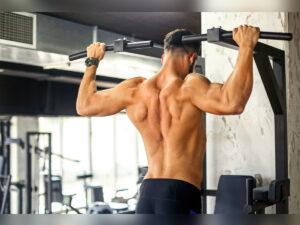The biceps brachii, commonly known as the biceps, is one of the most iconic muscles in the human body. Located in the upper arm, it plays a crucial role in various daily activities involving flexion at the elbow and supination of the forearm. Building well-defined and strong biceps is a goal for many fitness enthusiasts, and achieving this requires a thorough understanding of the science behind biceps workout training.
In this comprehensive guide, we delve into the intricate anatomy and physiology of the biceps, exploring how different exercises target this muscle group effectively. Additionally, we’ll discuss training principles, workout routines, and the importance of proper nutrition and recovery for maximizing biceps growth.
Anatomy of the Biceps
The biceps brachii muscle is composed of two heads: the long head and the short head. Both heads originate from the scapula (shoulder blade) and insert onto the radius bone of the forearm. The long head originates from the supraglenoid tubercle of the scapula, while the short head originates from the coracoid process of the scapula. These two heads merge to form the main body of the biceps, which then inserts onto the radial tuberosity of the radius bone in the forearm.
The primary function of the biceps is flexion at the elbow joint, which involves bringing the forearm towards the upper arm. Additionally, the biceps contribute to forearm supination, which is the movement that turns the palm facing upwards.
Physiology of Muscle Growth
Before diving into specific exercises, it’s essential to understand the physiology of muscle growth, also known as hypertrophy. Muscle hypertrophy occurs when muscle fibers undergo stress or damage during exercise, prompting the body to repair and rebuild them, resulting in increased muscle size and strength.
There are two main types of muscle hypertrophy:
- Myofibrillar Hypertrophy: This type of hypertrophy involves an increase in the size and number of myofibrils within muscle fibers, leading to greater force production and strength.
- Sarcoplasmic Hypertrophy: Sarcoplasm refers to the fluid and energy stores surrounding the myofibrils within muscle fibers. Sarcoplasmic hypertrophy involves an increase in the volume of sarcoplasm, resulting in larger, more visually noticeable muscles.
Effective biceps training should aim to stimulate both types of hypertrophy through a combination of heavy resistance training and higher-repetition, moderate-weight exercises.
Principles of Biceps Training
To maximize biceps growth, it’s essential to apply the following training principles:
- Progressive Overload: Gradually increasing the resistance or volume of your workouts over time is crucial for continuous muscle adaptation and growth. This can be achieved by adding more weight to exercises, increasing the number of repetitions, or adjusting rest intervals between sets.
- Variation: Incorporating a variety of exercises that target the biceps from different angles and with different grips ensures comprehensive muscle stimulation and prevents plateauing.
- Mind-Muscle Connection: Focusing on engaging the biceps throughout each repetition of an exercise helps maximize muscle fiber recruitment and promotes better results.
- Proper Form: Performing exercises with proper technique is essential for targeting the biceps effectively while reducing the risk of injury. Avoid using momentum or swinging the weights, and maintain control throughout the entire range of motion.
- Rest and Recovery: Adequate rest between workouts allows the muscles to repair and grow. Overtraining can impede progress and increase the risk of injury, so it’s essential to prioritize rest days and quality sleep.
Effective Biceps Exercises
Now let’s explore some of the most effective exercises for targeting the biceps:
1. Barbell Curl
The barbell curl is a fundamental exercise for building overall biceps mass. To perform this exercise:
- Stand upright with a barbell held at arm’s length using an underhand grip, hands shoulder-width apart.
- Keeping your elbows close to your sides, curl the barbell upwards towards your shoulders.
- Squeeze the biceps at the top of the movement, then lower the weight back down in a controlled manner.
2. Dumbbell Curl
Dumbbell curls allow for greater range of motion and can help correct muscle imbalances between the left and right arms. Here’s how to perform dumbbell curls:
- Hold a dumbbell in each hand with arms fully extended by your sides and palms facing forward.
- Curl the weights upwards while rotating your wrists, so your palms face towards your shoulders at the top of the movement.
- Lower the dumbbells back down under control, maintaining tension on the biceps throughout.
3. Hammer Curl
Hammer curls target the brachialis muscle, which lies underneath the biceps, as well as the brachioradialis muscle in the forearm. To perform hammer curls:
- Hold a pair of dumbbells with palms facing each other, arms fully extended by your sides.
- Keeping your elbows stationary, curl the dumbbells upwards towards your shoulders.
- Lower the weights back down in a controlled manner, maintaining tension on the muscles.
4. Preacher Curl
Preacher curls isolate the biceps by stabilizing the upper arms against a preacher bench, reducing momentum and focusing the tension on the biceps. Here’s how to perform preacher curls:
- Sit at a preacher bench with your upper arms resting against the angled pad and your chest pressed firmly against the other pad.
- Grasp an EZ bar or dumbbells with an underhand grip and curl the weight upwards towards your shoulders.
- Lower the weight back down until your arms are fully extended, maintaining control throughout the movement.
5. Concentration Curl
Concentration curls are a single-arm isolation exercise that targets the biceps brachii directly. Here’s how to perform concentration curls:
- Sit on a bench with your legs spread apart and a dumbbell in one hand.
- Rest the back of your upper arm against the inside of your thigh, ensuring your elbow is fully extended.
- Curl the dumbbell upwards towards your shoulder while keeping your upper arm stationary.
- Lower the weight back down under control, focusing on the contraction in the biceps.
Sample Biceps Workout Routine
Here’s a sample biceps workout routine that incorporates the exercises mentioned above:
Day 1: Biceps
- Barbell Curl: 4 sets x 8-10 reps
- Dumbbell Curl: 3 sets x 10-12 reps
- Hammer Curl: 3 sets x 10-12 reps
- Preacher Curl: 3 sets x 10-12 reps
- Concentration Curl: 2 sets x 12-15 reps
Day 3: Active Rest or Cardio
Day 5: Biceps
- Dumbbell Curl: 4 sets x 8-10 reps
- Hammer Curl: 3 sets x 10-12 reps
- Barbell Curl: 3 sets x 10-12 reps
- Preacher Curl: 3 sets x 10-12 reps
- Concentration Curl: 2 sets x 12-15 reps
Day 7: Rest
Nutrition and Recovery
Nutrition plays a crucial role in supporting muscle growth and recovery. To optimize biceps development, focus on consuming an adequate amount of protein to provide the building blocks for muscle repair and growth. Additionally, ensure you’re consuming enough calories to fuel your workouts and promote hypertrophy.
In terms of recovery, prioritize getting enough sleep each night to allow your muscles to repair and grow. Aim for 7-9 hours of quality sleep per night. Additionally, consider incorporating restorative practices such as stretching, foam rolling, and massage to alleviate muscle soreness and improve flexibility.
Conclusion
Building well-developed biceps requires a combination of targeted exercises, progressive overload, proper form, and adequate nutrition and recovery. By understanding the anatomy and physiology of the biceps and applying the principles of effective training, you can achieve your goals of stronger, more defined arms. Remember to listen to your body, adjust your workouts as needed, and stay consistent in your efforts for long-term success.
At Fitsse, we offer a comprehensive and personalized program to help you develop strong, toned, and well-defined biceps. With a team of fitness and bodybuilding experts, our service is designed to meet your individual needs, regardless of your level of experience or fitness goals.
Recent studies suggest that incorporating eccentric training, which emphasizes the lowering phase of a movement, can significantly enhance biceps strength and size. This approach can be particularly effective when combined with traditional concentric exercises.
Emerging research highlights the potential benefits of blood flow restriction (BFR) training for biceps growth. This technique involves using cuffs or bands to partially restrict blood flow during low-intensity exercises, promoting muscle hypertrophy with lighter weights.
Incorporating isometric holds, where the muscle is contracted without movement, can also contribute to increased muscle endurance and strength. This can be done by pausing at the peak contraction point during biceps exercises.
For optimal results, consider periodizing your biceps training by alternating between phases focused on strength, hypertrophy, and endurance. This approach can prevent plateaus and stimulate continuous muscle growth.
Recent advancements in wearable fitness technology now allow for more precise tracking of muscle activation during workouts, helping individuals tailor their biceps training for maximum effectiveness.








This guide provides an in-depth understanding of biceps training, emphasizing the importance of anatomy, physiology, and proper exercise techniques. It’s great to see a well-rounded approach that combines science with practical application to help fitness enthusiasts achieve their goals. Keep up the good work and stay committed to your fitness journey!